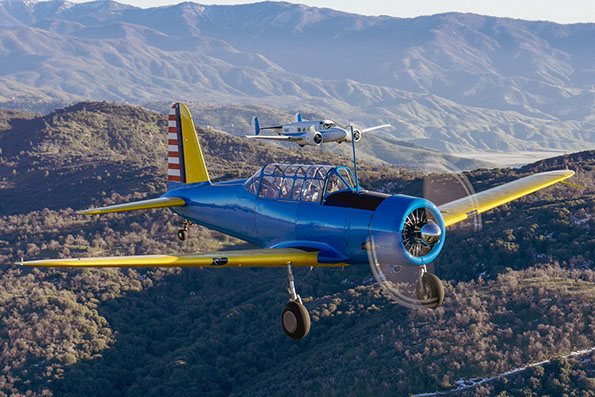1944 Convair BT-13A
Basic training aircraft
Condition: Airworthy
Our BT-13 was the basic trainer flown by most American pilots during World War II. It was the second phase of the three phase training program for pilots. After primary training in PT-13, PT-17, or PT-19 trainers, the student pilot moved to the more complex BT-13 for continued flight training. The BT-13 had a more powerful engine and was faster and heavier than the primary trainer. It required the student pilot to use two way radio communications with the ground and to operate landing flaps and a two-position Hamilton Standard controllable-pitch propeller. It did not, however, have retractable landing gear nor a hydraulic system. The flaps are operated by a crank-and-cable system.
Pilots nicknamed it the "Vultee Vibrator."
The Navy adopted the P&W powered aircraft as their main basic trainer, designating it the SNV. The BT-13 production run outnumbered all other Basic Trainer (BT) types produced.
In 1938, Vultee chief designer Richard Palmer began designing a single-engine fighter aircraft. About that time, the Army Air Corps issued a solicitation for an advanced trainer, with the promise of a substantial order if selected. Palmer adapted his design concept from a fighter to an advanced trainer, resulting in the V-51 prototype and a first flight on 24 March 1939.

.jpg?crc=24721363)

Copyright 2022 Golden Age Flight Museum
